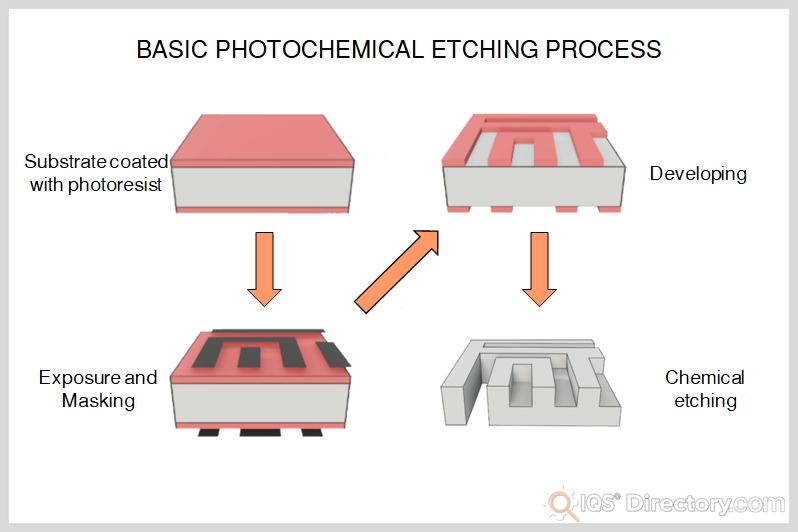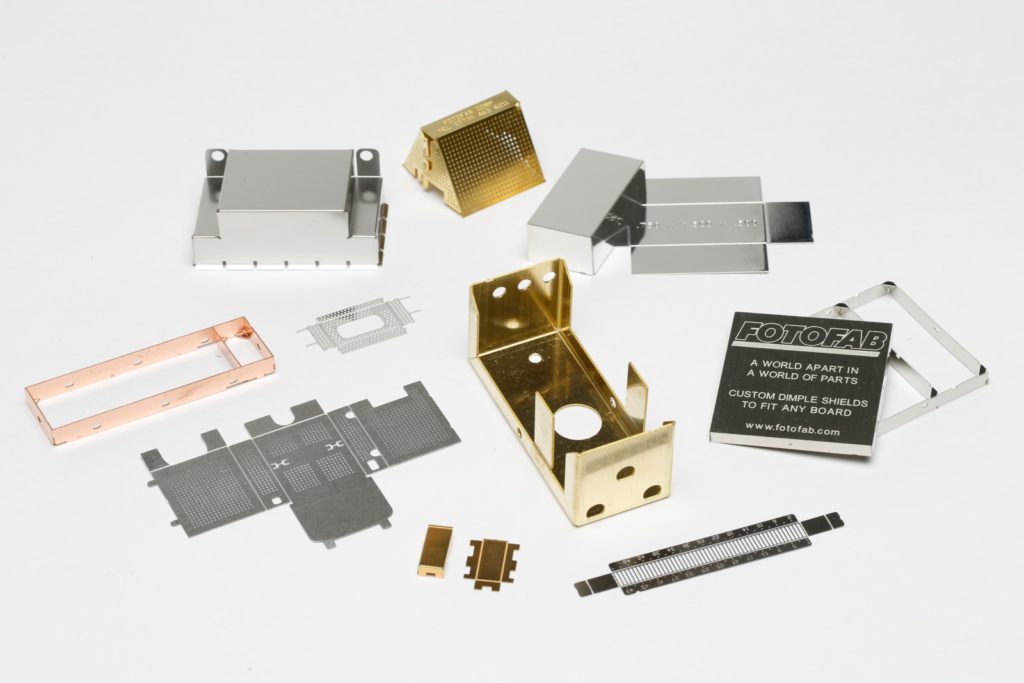Applications of Photochemical Etching
Article contributed by: John Hamlin, Industrial Info
As the world becomes technologically advanced and industrial automation and innovation progress, the demand for electronic components and systems increases. Various industries such as medical, aerospace, electronics, and automotive require small and highly complex metal components which demand very specific characteristics like ultra-high precision, very thin material, unique features, and competitive cost.
While there are several manufacturing technologies available in the market designed to create precision metal parts, the use of photochemical etching, also called metal etching, chemical etching or photochemical machining, is the ideal choice because it is capable of incorporating all these features in different products.
Fotofab products are made in the USA and distributed worldwide.
Photochemical etching is faster and lower cost compared to using other traditional machining methods like drilling, laser cutting, stamping, and wire EDM. Photo-etched metal parts are thermal stress-free and, thus, properties such as conductivity and surface friction are not affected. Products also remain burr-free, creating smooth surfaces and precision-etched edges, which optimize the component’s performance.
With these promising characteristics, photo-etched parts are used in a broad range of applications from EMI & RFI shields to screens, encoder wheels to fuel cells, and decorative components.

Medical
In the medical industry, where lives are at stake, applications must operate at a high degree of reliability. Medical device or medical implants must be reliable, and their metal components should meet the stringent quality and safety qualifications.
For instance, Fotofab’s precision metal parts go through a stringent photochemical etching process compliant to international certification requirements (ISO 9001:2015 certification, RoHS3, EU REACH, and MDR compliance) while also meeting the customer design specifications.
RF shields, snares, suture loaders, surgical needle threaders, filters, and shims are some of the crucial medical components Fotofab is producing for the medical field on a continual basis. These photochemical etched parts are mainly used for ventilators, medical devices, and one-time use surgical tools. Now, Fotofab parts can also be found in devices used for COVID-19 testing.
Military Defense
Like in the medical industry, a high degree of reliability is critical to the military defense industry hence the use of photoetched metal components applied in most of their technologies. Components like antenna elements and arrays, EMI shielding, micro contacts, and gaskets are just some of the common applications used in the defense industry.
A wide range of military parts found in drones, aircraft vehicles, GPS systems, fine control systems, and remote monitoring systems also make use of these precision components which Fotofab has reliably manufactured for decades.
Aerospace
The aerospace industry is widening to include commercial airplanes to highly sophisticated detection systems and rocket ships. From flat spring contacts to intricately designed fuel cells, Fotofab manufactures many components critical to the aerospace industry.
Aluminum and Titanium are the most often used metals in aerospace applications since they are lighter than other common metals like steel, copper, and brass. Weight is an important consideration for most aircraft or spacecraft. Photochemical etching can achieve tolerances of 10µm on metal thicknesses of 10µm to 1.5mm[1].
Photo-etched components are commonly found in the electronic parts of the spacecraft, including lead frames, EMI/RFI shielding, precision connectors, and contacts. These are also used in radar devices and telescopes.
Automotive
The automotive industry requires consistently manufactured components at growing production scales. Photochemical etching is ideal for this need due to its ease of capacity growth and extreme precision with low overhead costs. Part changes can be made easily at low tooling costs, and production growth is a breeze with increased metal sheet sizes or increased parts processed.
Aluminum etched components are used in electric vehicles because they provide efficient heat transfer for batteries. Aluminum is also the metal of choice for lighter vehicles because of its high strength to weight properties. Etched aluminum can also be used for vehicle identification numbers and other identifying marks.
Aside from aluminum, photo-etched stainless steel is commonly found in the automotive industry. Because of its corrosion resistance and high heat and electrical conductivity, stainless steel is used in a magnitude of automobile components. It is also a good material for decorative embellishments or constructing fuel cells.
Electronics
Small parts and tight dimensional tolerances are very common in the electronics industry. Thus, precision metal components are critical. Some examples of photo-etched electronic components are image sensors, attenuators, waveform samplers, semiconductors, and electrical/battery contacts.
Beryllium Copper (BeCu) is widely used in battery contacts because of its strength, high conductivity level, and non-magnetic nature. BeCu can also withstand high temperatures and is resistant to non-oxidizing acids. However, Beryllium and its alloys must be handled and processed with care since air-borne particles of beryllium dust are highly toxic if breathed in with serious latent effects. Fotofab’s process of chemically etching the metal eliminates this potential dust formation by dissolving the metal ions. Fotofab manufactures custom electrical contacts and terminals made from BeCu with a wide range of applications.
Telecommunications
Another industry that widely uses photoetched parts is the telecommunications industry. Common telecommunications components are shields, covers, fences, filters, and flat springs. Fotofab is the leading supplier of precision parts to the telecommunications industry. Our specializations include low-profile EMI/RFI shielding, UHF/microwave antennas, ground springs, EMI shielding gaskets, fiber optical cables, and more.
Other Applications for Photochemical Etching
Today, photochemical etched products are found almost everywhere, even in the most common parts and objects we encounter every day. Fine filters and screens, gaskets, electrical contacts, and printed circuit board shields are just a few of the more common applications.
As the demand for precision metal components continues to increase, the applications and requirements of various industries must also evolve. Some may even require customized parts and designs which fit their specific needs.

Fotofab offers a wide range of services including customized parts and design solutions to satisfy the customers’ needs. Download our whitepaper to learn how photochemical machining answers the demand for low-cost, burr-free parts with intricate, close tolerance-patterns in a vairety of flat metal materials.
[1] https://www.aerospacemanufacturinganddesign.com/article/amd0615-photo-etching-aerospace-components/
